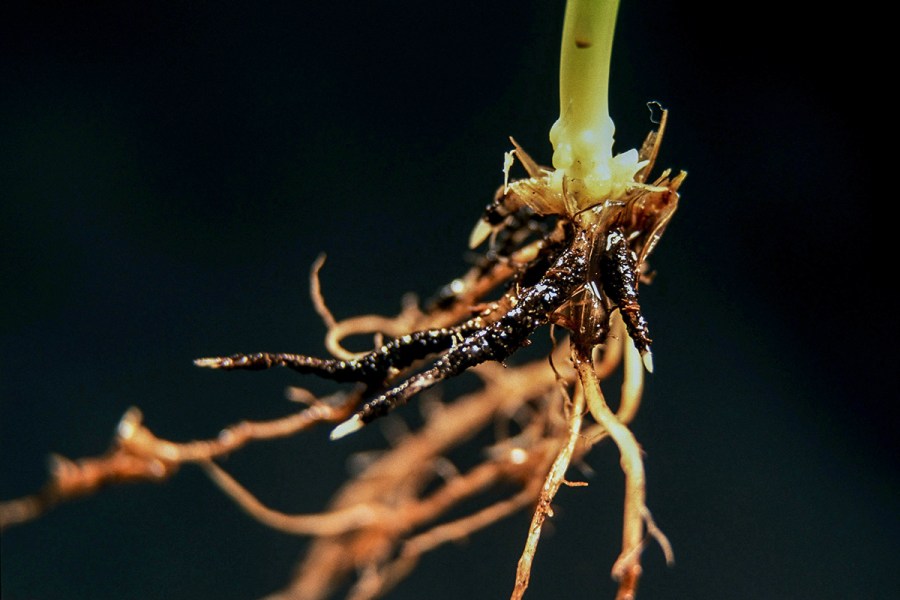The impact of take-all disease in cereal crops not only damages yields and grain quality, but also the environment and there has been a steady increase in its prevalence over recent seasons. CPM looks at how this might be addressed now and in the future.
Finding a way of encouraging beneficial fungi or bacteria to compete with take-all is a target.
By Lucy de la Pasture
It’s widely expected that this autumn, winter wheat plantings will be pushing an all-time high in response to the buoyant grain markets. But growers are being urged not to throw caution to the wind and consider the possible effects before planting second wheats.
Second or consecutive cereal crops, especially wheat and barley crops, are increasingly affected by take-all as the climate warms. The damage to root systems caused by the disease also has consequences beyond yield depression and reduced grain quality – more nutrients will be lost from soils with a potentially damaging effect on the environment.
Many wouldn’t have expected to see significant take-all infection in cereal crops due to the prolonged period of dry weather this spring. However, this year has turned out to be a severe season in soils suitable for this root disease, explains Kim Hammond-Kosack, Rothamsted Research pathogenomics lead and take-all researcher of 25-years.
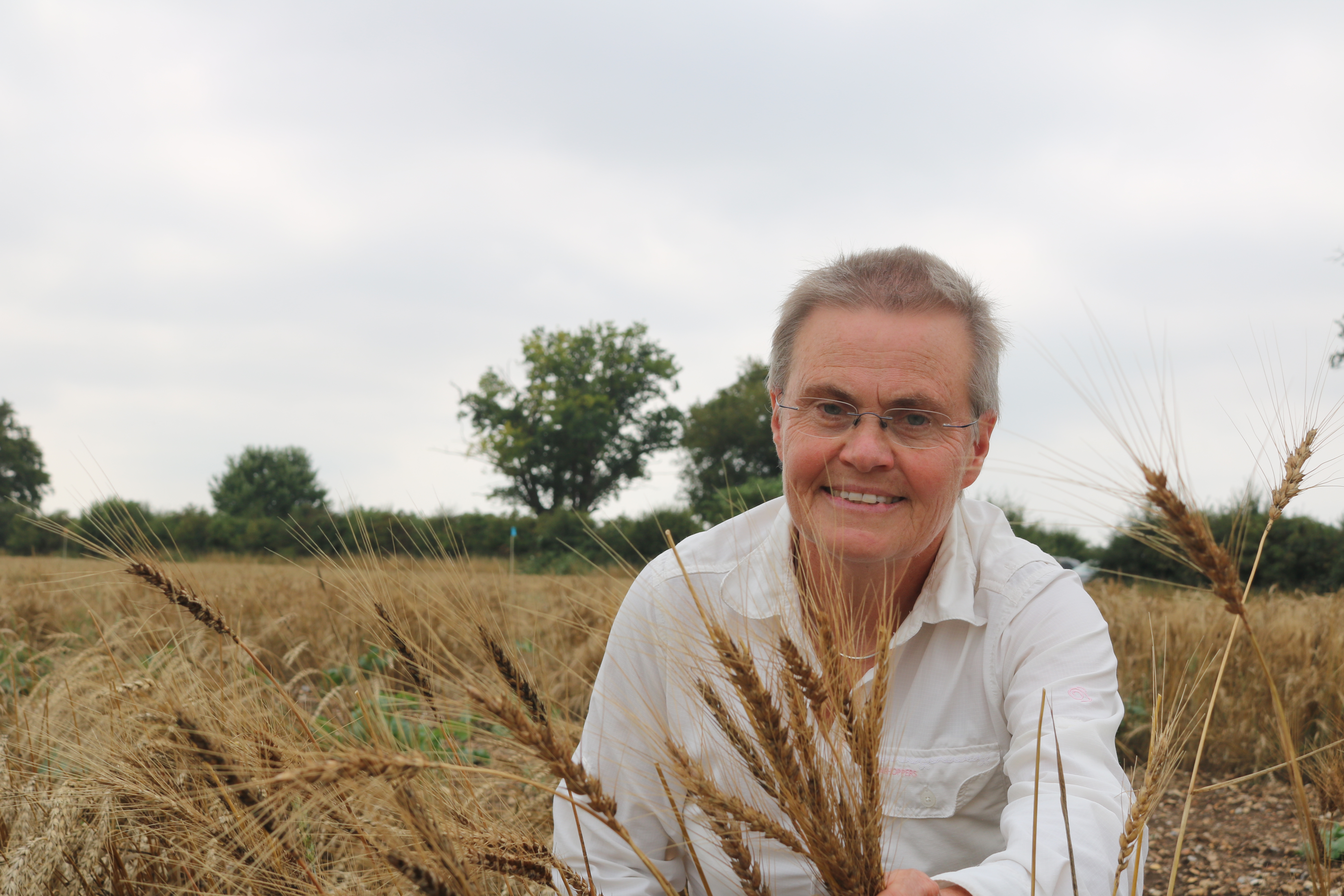
This year has turned out to be a severe season for take-all disease. Patches of blackgrass could be an indication of high early infection levels, says Kim Hammond-Kosack.
She explains that because the 2020-21 cropping cycle was very wet, after two seasons of tricky drilling windows growers took advantage of favourable conditions and drilled wheat in good time last autumn.
“We then had rain over winter before it dried out in early spring. Rather than drying throughout the [upper] profile, some soils capped and kept all that moisture in the rooting zone. We believe that’s why take-all levels are so high this summer.
“Well established take-all patches were visible in second and third cereal crops before the Cereals Event in early June, which is very rare,” explains Kim.
This rare phenomenon could turn into something much more common over the next decade, with warmer and wetter winters predicted for the UK. Such conditions provide the ideal scenario for the pathogen to infect second and consecutive wheat and barley roots in the autumn, then develop into damaging symptoms in the spring and summer.
Kim says there’s an abundance of Rothamsted Research data on take-all, captured over many years as part of work funded by the Defra-sponsored Wheat Genetic Improvement Network (WGIN) and the BBSRC.
Looking at take-all yield reduction specifically, the data shows that across all elite cultivars and UK Flour Millers groups, even in a year where you don’t see obvious symptoms, it’s stealthily robbing about 0.2t/ha, she says.
“In a year where there’s the worst combination of a mild and wet winter and soil moisture is retained in the spring, like this growing season, then affected crops can lose as much as 2.5t/ha in infected areas.”
She adds that many farmers won’t necessarily realise they have major take-all issues in some crops as the symptoms of the pathogen can lead to separate issues that mask its presence.
“What they’re probably noticing are things like patches of blackgrass and being unsure why,” she says. “We have a third wheat trial this year that is absolutely swamped with blackgrass, whereas the nearby first wheat situation has no blackgrass at all. Here, the high levels of take-all disease got in early, thinned the crop and the blackgrass has been able to germinate and take over the space with little or no crop competition.”
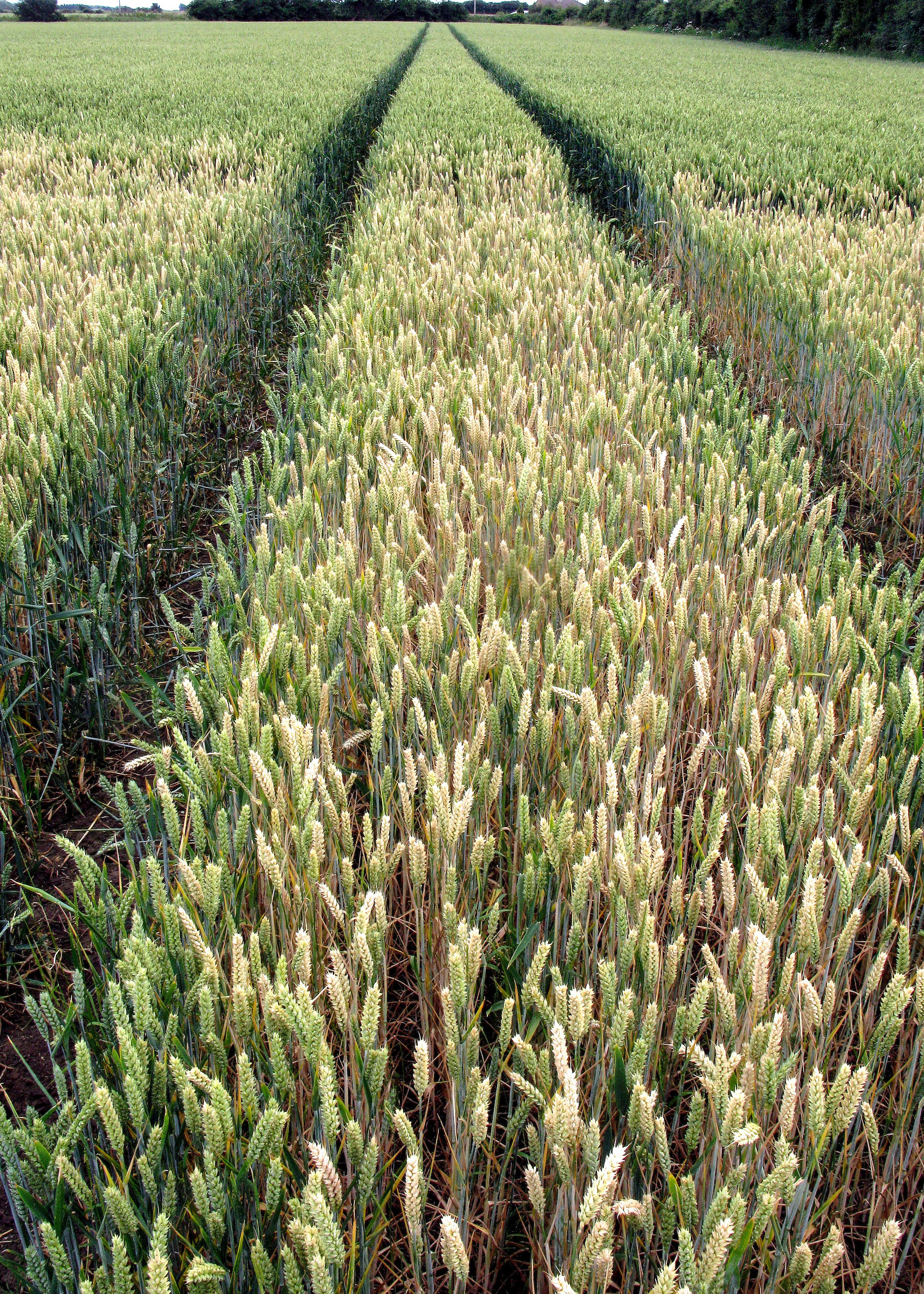
Well established take-all patches were visible in second and third cereal crops before the Cereals Event in early June.
With wheat stacking up as the most profitable component of an arable rotation as grain prices ride high, plus the removal of the three-crop rule, farmers may be tempted to push their wheat acreage up this autumn.
Kim points to plenty of research that will, in time, lead to growers having a diverse toolbox to combat take-all in these crops, with plant breeding one of the key areas where solutions will be found.
Sources of take-all resistance have been identified in landraces, which are currently being introduced into commercial wheat varieties through traditional breeding methods. It’s hoped that in five years root resistant varieties will be on the AHDB Recommended List, she notes.
There are also other genetic avenues that researchers are actively looking down to confer a resistance to take-all in susceptible cereal species. For instance, rye is affected by take-all but has a genetic trait that allows the root system to respond to infection by growing more roots. The gene (or genes) controlling this desirable trait has not been identified so far but it’s hoped that once it’s discovered, this mechanism can be successfully transferred into susceptible crops like wheat and barley, she explains.
“Oats aren’t affected by the dominant take-all pathotype due to an ability to produce a substance known as avenacin, which protects the roots from the deep infections that cause the most damage.”
Researchers at the John Innes Centre have been studying the biosynthetic pathway and hope to be able to transfer an ability to produce avenacin into wheat using GM technology and provide another layer of defence in the future.
Kim also notes a study in China has uncovered a GM approach known as host-induced gene silencing (HIGS), where the host is modified with the ability to disarm the pathogen. Researchers in the UK are looking into its potential against key pathogens like take-all, she says.
“As the root system is very difficult to manage during the growing season, particularly when plants are more mature, protecting the entire root system through breeding, GE and/or GM-based approaches is the way forward.
“Although it looks like a long shot, because we haven’t been able to make HIGS work against septoria and fusarium, it would be very good to have defence mechanisms based on gene silencing to combine with conventional sources of resistance,” notes Kim.
Until some of these tools arrive, Kim says growers will have to rely on cultural options and the one truly effective fungicide seed treatment is silthiofam, contained in the Certis Belchim product Latitude.
These cultural options include rotation (effectively reducing or eliminating soil inoculum build up in second and third cereal areas), later drilling, producing well-consolidated seedbeds and good management of grassweed hosts throughout the rotation.
There’s also a new crop trait that was discovered at Rothamsted Research in the mid-2000s in some commercial UK winter wheat varieties, now known as the take-all inoculum build-up (TAB) trait.
When certain wheat varieties have the low version of the TAB trait (LowTAB varieties) and are grown in a first wheat position, their root systems help reduce the build-up of the levels of take-all fungal inoculum in the soil. This means any subsequent cereal is exposed to lower infection risk.
Kim believes a move to more regenerative practices will help as improving organic matter and soil biology will increase competitor organisms. These can then beat take-all to colonising roots and reduce the impact of the disease.
“It would be helpful to have a diagnostics test for these beneficial organisms, so a farmer could have an idea of their presence. Also finding a way of encouraging beneficial fungi or bacteria to compete with take-all is a target, perhaps by putting that biology around the seed,” says Kim.
Latitude adds another layer of take-all risk management as part of an integrated control strategy and Kim hints that it should only be considered as a tool to reduce primary infection and protect yield.
Indirect consequences of root damage
One of the many direct and indirect consequences of take-all infection is the reduced nutrient uptake due to compromised rooting and this in turn leads to run-off and leaching into water courses and/or groundwater.
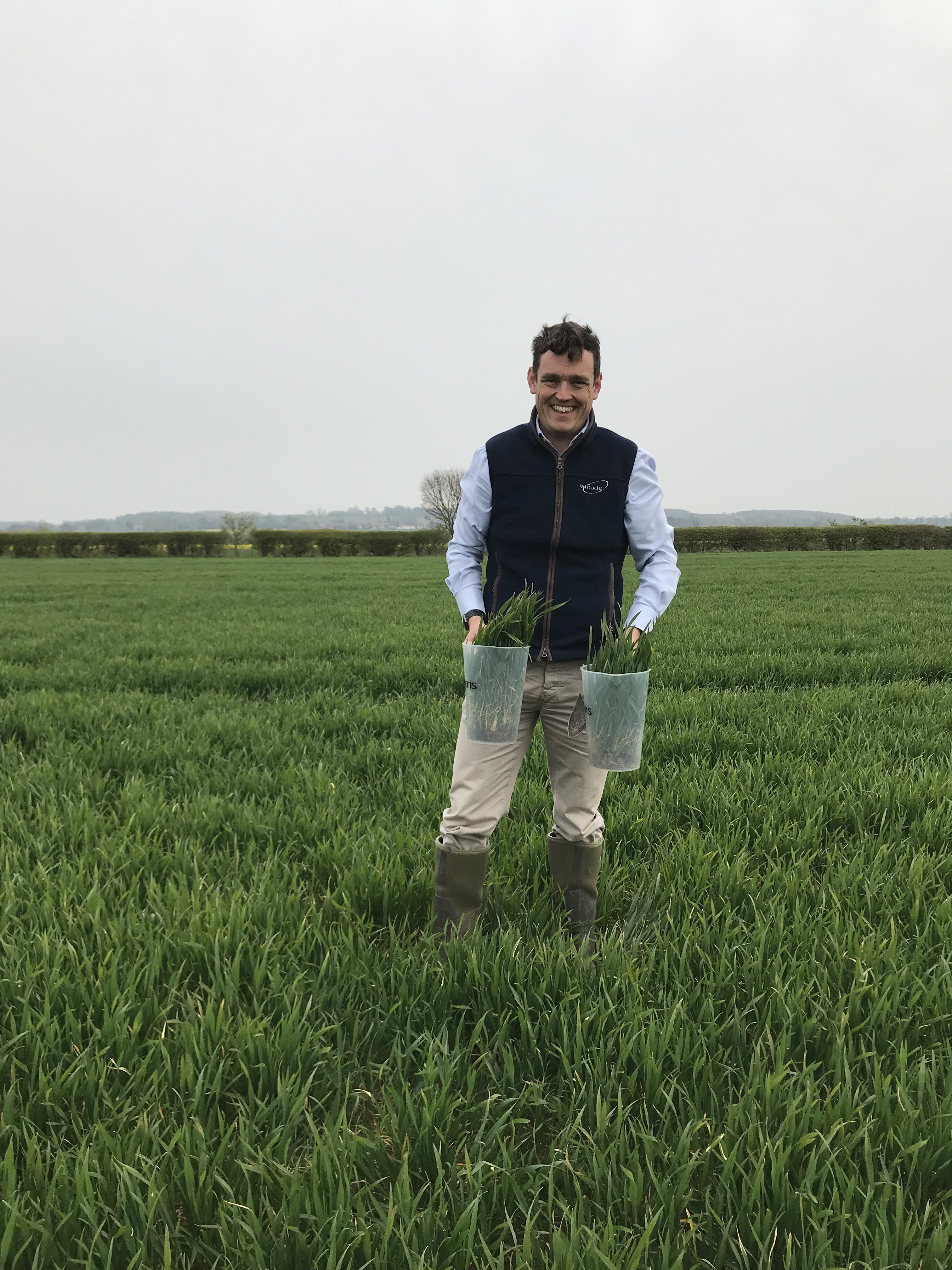
Tim Eaton says trials are showing the benefit from Latitude seed treatment and that by protecting against primary infection, nutrient use efficiency is also maintained.
Kim explains that this negatively impacts aquatic and marine biodiversity, causes eutrophication, and costs the water companies significant sums to clean out excess nitrogen, phosphate, and potassium from drinking supplies.
Any excess nitrogen is also left in the top 13cm where the take-all effect is greatest, she says. “When soils are exposed to high solar radiation in the summer it turns into a gaseous state and is released into the atmosphere – a process at loggerheads with net zero goals.”
Rothamsted Research is working with water companies and farmers in priority catchments to help minimise take-all risk, such is the concern about these indirect environmental consequences.
“A lot of farmers are looking at their nitrogen balance, not just because of the high costs and the bottom line, but also the impact within their water catchments and take-all is part of the problem,” she explains.
Germany was recently forced to strengthen its rules around fertiliser use for similar problems, following a warning from the European Commission on excessive nitrogen levels in water.
Tim Eaton, key account manager for seed treatments at Certis Belchim, says this led to work across the industry to help farmers tackle the issue and the company investigated the role Latitude might have in second wheats.
Split field trials were set up over four seasons between 2018 and 2021, comparing an untreated crop receiving a standard nitrogen rate and a Latitude-treated crop with 40kg/ha less N applied.
Tim says despite receiving less N, the Latitude-treated crop averaged 0.38t/ha more than the untreated and shows the benefit of protecting roots from primary take-all infection – it helps to maintain greater nitrogen use efficiency (NUE).
This can save growers some money when N inputs are high and reducing the risk of excess nitrogen being left in the soil to be lost into water or the atmosphere, he adds.
The economic case is strengthened by using the Certis Belchim Cost Benefit Calculator, highlights Tim. The online tool allows growers to enter crop price, the price of Latitude from their supplier and seed rate and the tool calculates a gross margin over initial Latitude cost.
When adding any potential nitrogen savings – demonstrated in the German trial – into the calculation, it adds up to a significant margin over input cost, he says.
“Many growers impacted by take-all will be familiar with the benefits of Latitude, but those that are usually reluctant to invest may be convinced when seeing the figures in black and white. It’s an economic and environmental win-win,” notes Tim
The take-all effect timeline
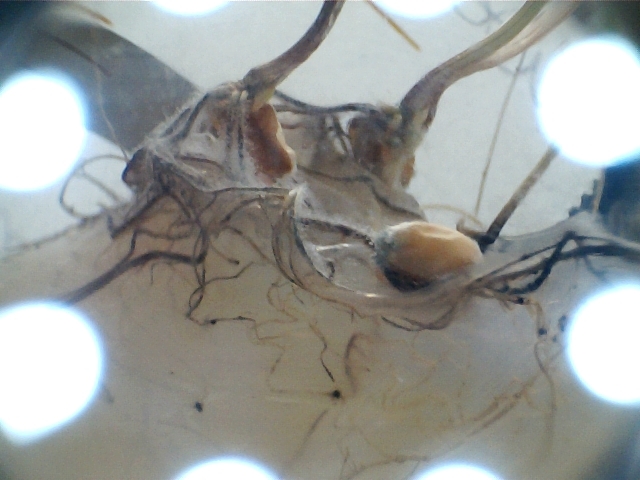
As seedlings put out their seminal roots from the seed, the fungus produces black runner hyphae – like microscopic black shoelaces – around the outside of the roots.
- Second or consecutive cereals, drilled early in mid- to late-September, are most susceptible as the take-all fungus is more active in the soil.
- Sowing later, from mid-October onwards, when soils are colder and the fungus causing this disease is less active, can reduce risk but the disease can still infect roots. During this period, there are always some roots infected, but not the whole root system.
- As seedlings put out their seminal roots from the seed, the fungus produces black runner hyphae – like microscopic black shoelaces – around the outside of the roots. These penetrate the roots and move into the vascular tissue.
- Seedling uptake of water is reduced, making plants more susceptible to drought stress and the movements in the phloem from the leaves into the roots become restricted. This can limit the photosynthate drawn down from the leaves to feed root growth.
- Over the winter, disease progression slows, particularly if it’s dry. However, if conditions are mild and moist, some further infection can occur.
- Once temperatures begin to warm up again in late February and into March and root growth begins to accelerate once more, the take-all fungus moves from older infected roots to new roots. This is when the disease is at its most dangerous, moving through the interconnected roots system in the top 13cm of soil and later causing the distinct patches seen in affected crops.
- Roots are black and brittle, water and spring-applied nutrient uptake will be dramatically compromised and plants become increasingly stunted and grain development is reduced or stopped altogether.
- Nothing can be done to control the disease at this stage, but growers can reassess fertiliser use to reduce unnecessary costs through poor nutrient use efficiency.
This article was taken from the latest issue of CPM. For more articles like this, subscribe here.

